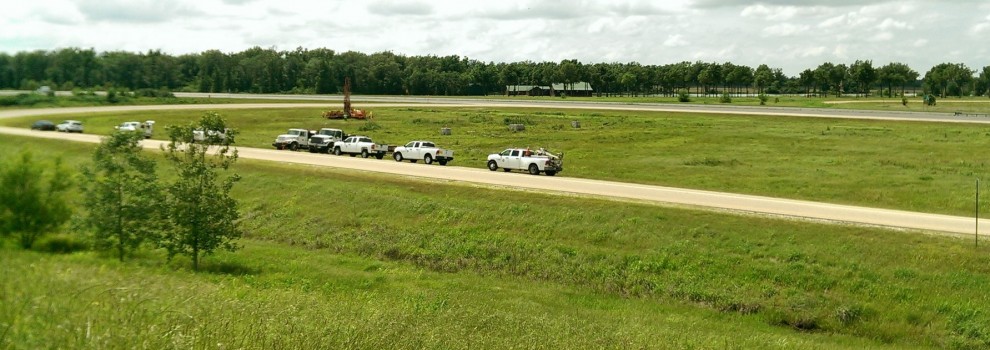
DISCLAIMER
Home
Welcome to the TRC- 1502 Project webpage. Please find all the information about this project on this Webpage.
The uncertainty involved with developing a safe, yet economical bridge design is greater in Arkansas than in most other parts of the country due to the New Madrid Seismic Zone (NMSZ) and the presence of deep, loose, sandy soil deposits found within the Mississippi Embayment (ME). Specifically, based on previously performed geotechnical investigations, soil deposits with Northeast Arkansas appear to be loose enough to liquefy (based on liquefaction triggering criteria)
The main objective of this project is to determine and elaborate the consequences of the design earthquake on transportation infrastructure (bridges) in Northeastern Arkansas. This will be completed by evaluating typical values of small-strain dynamics properties for surficial soils (0-100ft) and by determining the post-liquefaction axial capacities of drilled shafts and piles. Utilizing blasting, the earthquake motions will not be represented, however, the post-earthquake pore pressure development and dissipation will be represented during this investigation.

